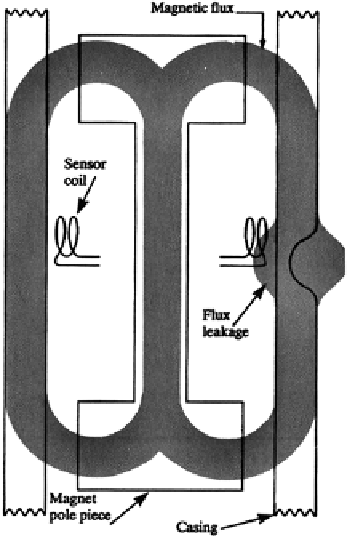Environmental Engineering Reference
In-Depth Information
Flux Leakage
If the poles of a magnet are positioned near a sheet of steel, magnetic fl ux will fl ow
through the sheet (Fig.
13.9
). So long as the metal has no fl aws, the fl ux lines will
be parallel to the surface. However, at the location of a cavity, either on the surface
of the sheet or inside it, the uniform fl ux pattern will be distorted.
Fig. 13.9
Magnetic-fl ux-
leakage principle. Courtesy
Schlumberger
The fl ux lines will move away from the surface of the steel at the location of the
anomaly, an effect known as fl ux leakage. The amount of fl ux distortion will depend
upon the size of the defect. If a coil is moved at a constant speed along the direction
of magnetic fl ux parallel to the metal sheet, a voltage will be induced in the coil as
it passes through the area of fl ux leakage. The larger the anomaly, the greater the
fl ux leakage, and therefore the greater the voltage induced. The magnetic fl ux is
distorted on both faces of the sheet, regardless of the location of the defect, and
therefore the coil only needs to be moved along one surface to survey the sheet
completely. As the coil must be moved through a changing magnetic fl ux to produce
a voltage, no signal is generated when it is moved parallel to the surface of an
undamaged sheet of steel.

Search WWH ::

Custom Search